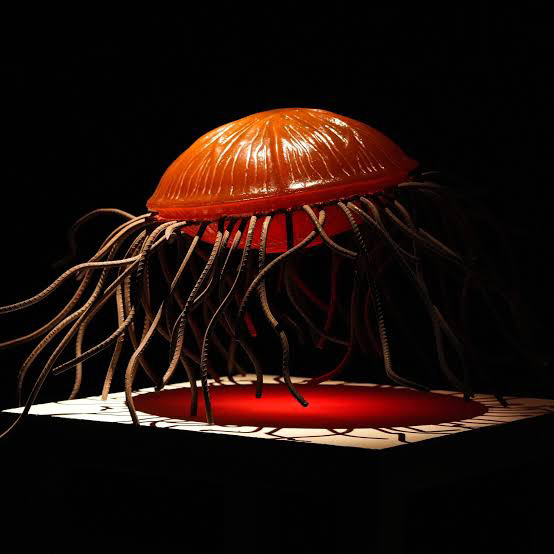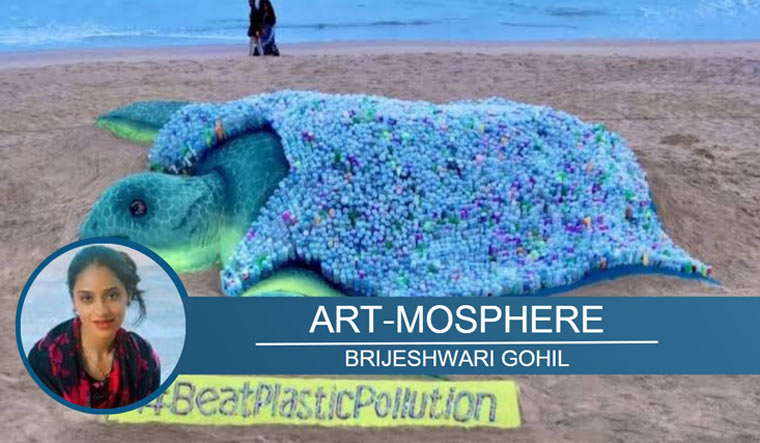A recent holiday led me to go diving in pristine blue waters and explore the bounties of the underwater world. Navigating the crystal clear depths, witnessing a cornucopia of aquatic species in their natural habitat was simply an overwhelming experience. However, the brightly coloured corals in these waters were even more magnificent a few years ago. Climate change and the heating of the ocean have led to disastrous repercussions for the creatures who call the ocean their home, with corals bleaching at an alarming rate. These corals are home to around a quarter of marine life.
The European Union’s Copernicus Climate Services recent data reveals that the oceans are heating up at an unprecedented rate. While this is leading to havoc underwater, the repercussions will be catastrophic for human beings as well. Amidst the surging heat waves across India, it is important to not overlook that the oceans do absorb 90 per cent of the excess heat on the planet.
Artists across the globe have drawn inspiration from water — the seas and the oceans have also been an integral part of most religious scriptures. In recent times, artists in India have been using their canvases to raise awareness and celebrate the ocean.
Could this create a real impact where manmade global warming and climate change is concerned?
Subodh Kerkar often refers to himself as an ocean artist. Celebrating all that the ocean offers, his art ranges from sculptures and performing pieces, making the ocean the main character, the provider, the muse of his art. His diverse body of work includes a visual performative series titled ‘Fisherman and the Ocean’. Encapsulating the way a fisherman’s life begins and ends with the ocean, his works show the deep connection the community has with the water. Kerkar showcases the fluidity of the ocean and the respect the fisherman holds for the sea, as the creator and the destroyer. Each deluge, the tornadoes and storms, the heating of the water, the shift in water currents and the ebb and flow of the tidal waves, impact a fisherman’s daily life.
The sea has been responsible for the flourishing of civilisations as well as the collapse and destruction of many. Kingdoms were built with the sea in mind for it provided a means to travel, trade and also acted as a natural form of fortification in many circumstances. Even religion and art were popularised through the sea.
Documenting marine life in a rather unique way, Rambharos Jha, uses the Bihar folk art of Mithila painting as a medium to explore the ocean. In his book titled ‘Waterlife’, he has created beautiful paintings of marine life in the Mithila style. The creatures display a sense of innocence, with a splurge of colours and detailed lines. The art works are not just a visual documentation of life underwater but testimony to the importance each small, tiny creature holds in our ecosystem.
Besides being threatened with rising temperatures, marine life is also a victim of pollution. Littering in the water, throwing plastic and waste, can be severely harmful to these sea creatures. Sand artist Sudarsan Pattnaik, through his art raises awareness about the harmful impact of plastic and waste on the sea. Last year, the artist used 2,320 plastic bottles at Odisha’s Puri Beach, to create a beautiful sculpture of a turtle.
While the sculpture gathered a lot of attention at the beach as well as on social media, I do wonder how many people are more conscious of littering plastic after seeing this masterpiece?
Similarly, Parag Tandel aims to raise awareness through his visual installations. Belonging to the fisherman Koli community, Tandel’s work has always been inspired by the sea and underwater creatures. At the Mumbai Art Festival last year, his installation titled ‘Vitamin Sea’, depicted aquatic creatures through sculptures cast in resin. Visitors were made to reflect on the harmful chemical pollutants choking these animals and the ways by which we are adulterating the sea.
 Vitamin Sea
Vitamin Sea
While awareness is raised, could this installation reduce the damage being done by factories to the oceans?
Artists use their works as a means of emoting and expressing themselves. These works then have the ability to inspire, move and impact a visitor. If each viewer takes a little piece of inspiration from these works of art, perhaps there will be less plastic strewn in our oceans at least.


